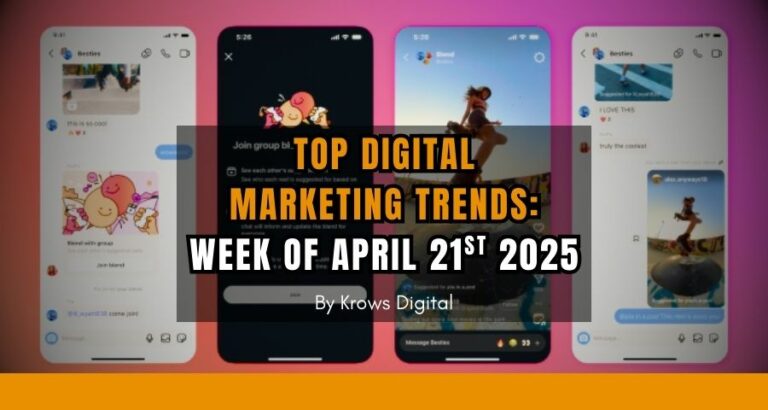Introduction to the Japanese Paid Advertising Market
As you can imagine, Paid Advertising in Japan is not the same as in other countries. Japan is a blend of traditional and modern marketing practices. For foreign companies who want to enter in this market, understanding its subtle nuances is crucial.
In fact, Japan has a complex digital advertising sector, with smartphone usage as its core, and it boasts a unique mix of search engines and platforms.
Let’s dig into the world of Japanese Paid Advertising.

Overview of Japan’s Digital Advertising Landscape
In Japan, digital advertising has been growing steadily. It was only in 2023 that digital ad spending surpassed traditional TV advertising in Japan. This shift is a strong signal of the increasing importance of digital channels in reaching Japanese consumers. Japanese consumers who are known for their meticulous (and quite long sometimes…) research before making purchase decisions.
Let’s go straight to facts, the main key platforms in Japan include Google and Yahoo! JAPANa. While Google dominates globally the Search Advertising market, Yahoo! JAPAN remains highly significant in Japan, making it an essential platform for any paid advertising strategy.
As of 2024, Google holds around 77% of the search engine market share, while Yahoo! JAPAN accounts for nearly 15%. Of course, if you need to choose only one, it would be Google Ads but nowadays with platforms like Google 360, you can manage campaigns on both with one management tool. As you can figure, both platforms offer different advantages and target demographics, so using a mix of both can maximize your reach.
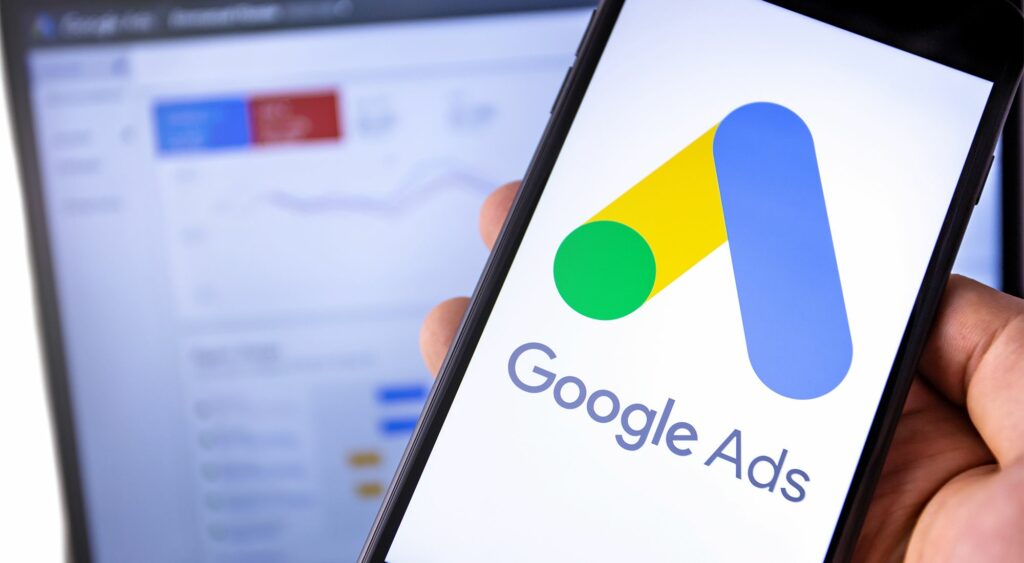
Google Ads in Japan
Dominance and Importance
This should not come as a surprise but Google Ads holds the number 1 position in Japan. This makes it a must-platform for any business looking to establish a digital presence in Japan. Regardless of your industry.
However, simply running ads on Google is barely enough. Japanese consumers have unique expectations, and understanding these is crucial for success.
Keyword Strategy
Choosing the right keywords is a critical factor in the success of your Google Ads campaign in Japan.
In fact, Japanese search queries are often long and detailed, reflecting the thorough research habits of consumers. Therefore, using broad-match keywords is less effective. Instead, focus on specific, localized keywords that directly target the needs and interests of Japanese consumers.
For example, if your goal is to improve your cost per conversion (if your goal is Reach, this is another story), instead of targeting "最高のスマートフォン," (best smartphone) a more effective keyword might be "東京でバッテリーが長持ちする最高のスマートフォン." (best smartphone with long battery life in Tokyo)
This level of specificity caters to the Japanese market's demand for detailed information.
Ad Copy and Localization
If you are just planning to use Google Translation or some shady cheap overseas translation companies, you will fail hard. Localization goes beyond mere translation.
Japanese consumers value respect and politeness in communication, so your ad copy should reflect this cultural standard. Understand that a direct translation from English to Japanese may not always convey the intended message. Therefore, hiring a local agency (like Krows Digital wink wink) with Japanese native copywriters is recommended.
Additionally, incorporating local trends and seasonal events into your ad copy can make your ads more relevant and engaging to Japanese users. For example, during 花見 (the cherry blossom season), incorporating themes related to this cultural event can resonate with the audience.

Bidding Strategy
You understand how to compel your message, now you need to bid!
Understanding the competitive landscape in Japan is crucial for setting up an effective bidding strategy. Some industries, such as tech and fashion, can be highly competitive, leading to higher cost-per-click (CPC) rates. However, these industries also offer significant potential for return on investment (ROI) if targeted effectively.
You can use automated bidding strategies like Target CPA (Cost-Per-Acquisition) or Maximize Conversions to optimize your budget while focusing on acquiring customers. Manual bidding, while more time-consuming, allows you to have more control over individual bids and can be beneficial in highly competitive sectors.
Mobile Optimization
As mentioned at the beginning of this article. Japan has one of the highest smartphone penetration rates in the world, with over 80% of the population using mobile devices for internet access. Therefore, mobile optimization is not just a good practice, it’s mandatory.
Ensure that your ads, landing pages, and overall website are mobile-friendly. Fast load times, responsive design, and user-friendly navigation are all crucial elements of a successful mobile campaign. Google penalizes slow-loading sites in mobile search rankings, so optimizing for speed can also improve your ad performance.
This will be mentioned in a future article but be aware that Japanese websites and landing pages are different from anything you will see in other countries. Japanese people seek information (as much as possible) and will not care so much about your minimal-looking landing page …
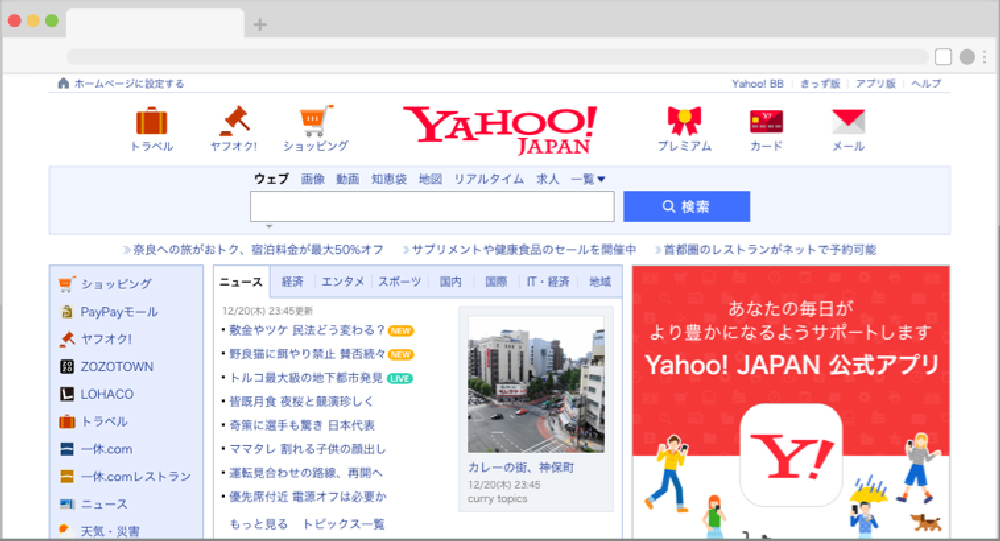
Yahoo! JAPAN Ads
Significance of Yahoo! JAPAN in the Japanese Market
Let’s talk about the number 2 in Japan! Yahoo! JAPAN is a pivotal platform in Japan’s digital ecosystem, holding approximately 15% of the search engine market share. Unlike in many other countries, where Google is the strong and uncontested leader, Yahoo! JAPAN remains a significant player in Japan.
It is especially popular among older demographics and homemakers, making it an essential part of a comprehensive advertising strategy.
Yahoo! JAPAN is more than just a search engine; it’s a comprehensive portal that includes services like Yahoo Shopping, Yahoo News, Yahoo Finance, and more. This integration offers advertisers unique opportunities to reach users across various touchpoints, including search, display, and shopping ads.
Ad Types and Formats
- Search Ads: Similar to Google, Yahoo! JAPAN offers search ads that appear at the top of search results. However, the keywords and user behavior may differ from Google, requiring a distinct strategy. Yahoo! JAPAN users often search with longer, more detailed queries, so tailoring your keyword strategy to these habits is crucial.
- Display Ads: Display ads on Yahoo! JAPAN can appear across its extensive network of services. These ads should be visually appealing and culturally relevant to capture the attention of Japanese users. Given the older demographic that frequents Yahoo! JAPAN, ads that emphasize trust, reliability, and quality tend to perform well.
- Native Ads: Yahoo! JAPAN offers native ads that blend seamlessly with the content on the platform. These ads are less intrusive and can lead to higher engagement rates, especially if they are well-aligned with the user's interests.
- Yahoo! Shopping Ads: If you're in the e-commerce space, Yahoo! JAPAN Shopping Ads allow you to promote your products directly within the shopping portal. This can be a powerful tool for driving sales, especially during Japan's peak shopping seasons.
Keyword Strategy
Keyword strategy for Yahoo! JAPAN Ads should be tailored to the platform's unique audience. Unlike Google, where shorter and more general keywords might work, Yahoo! JAPAN users tend to search with more specific and longer phrases. Therefore, focusing on long-tail keywords that cater to the detailed search habits of the users can result in higher click-through and conversion rates.
For instance, instead of targeting a broad keyword like "ネットショッピング," (online shopping) a more effective approach might be "家電製品のオンラインショッピング." (affordable online shopping for home appliances in Japan)
This specificity caters to the meticulous nature of Japanese consumers who often prefer detailed searches.
Audience Targeting
Yahoo! JAPAN provides various targeting options, allowing advertisers to reach specific demographics effectively. Some of the key targeting features include:
- Demographic Targeting: Reach users based on age, gender, and location, which is particularly useful given Yahoo! JAPAN’s strong appeal among older demographics.
- Interest Targeting: This allows you to target users based on their interests and browsing behavior across Yahoo! JAPAN’s network of services, ensuring your ads reach those most likely to be interested in your product or service.
Using these targeting options effectively can help you reach the right audience at the right time, maximizing your ad spend.
Ad Copy and Localization
As with Google Ads, localization is crucial when creating ad copy for Yahoo! JAPAN. Japanese consumers value politeness and quality, so your ad copy should reflect these cultural norms. Additionally, including localized phrases or references can make your ads more relatable and effective.
It’s also important to note that Yahoo! JAPAN users may have different expectations compared to Google users. For example, they might respond better to ads that emphasize tradition, reliability, and long-term value rather than novelty or trends.
Bidding Strategy
Bidding strategies on Yahoo! JAPAN should consider the platform's unique audience and competition. While Yahoo! JAPAN generally has lower cost-per-click (CPC) rates compared to Google, it’s essential to allocate sufficient budget to compete effectively, especially in popular sectors like fashion, travel, and finance.
Consider using Yahoo! JAPAN’s automated bidding options, which optimize your bids based on your campaign goals, such as maximizing clicks or conversions. Manual bidding can also be effective for more granular control, especially in highly competitive industries.
Mobile Optimization
While Yahoo! JAPAN’s audience tends to skew older, mobile optimization remains crucial. Japan’s mobile usage is high, and Yahoo! JAPAN is frequently accessed on smartphones. Ensure your ads and landing pages are mobile-friendly, with fast loading times and easy navigation.
Given that Yahoo! JAPAN offers various mobile-specific ad formats, including in-app ads, optimizing for mobile can help you reach users on the go and increase your overall campaign effectiveness.
Performance Tracking and Optimization
Tracking and optimizing your Yahoo! JAPAN Ads campaign is essential for success. Regularly monitor key metrics such as click-through rates (CTR), conversion rates, and return on ad spend (ROAS). Based on this data, make adjustments to your bids, ad copy, and targeting to improve performance.
Yahoo! JAPAN also offers robust analytics tools that can help you gain insights into user behavior and campaign performance. Utilizing these tools effectively can help you refine your strategy and achieve better results over time.
Case Studies: Successful Paid Advertising Campaigns in Japan

1. Airbnb
Airbnb successfully penetrated the Japanese market by utilizing both Google and Yahoo! JAPAN ads with localized content. The company focused on creating ads that catered to Japanese cultural nuances, such as emphasizing the convenience and safety of staying in a home over a hotel. This strategy led to a significant increase in bookings, particularly during peak travel seasons like Golden Week.
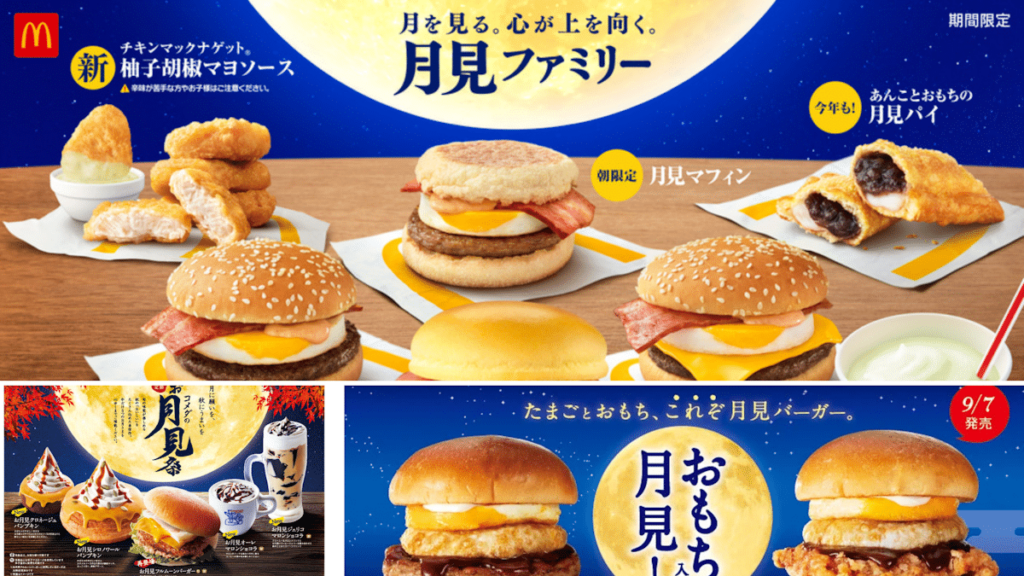
2. McDonald's Japan
McDonald’s leveraged Google Ads and Yahoo! JAPAN to promote its limited-time offers, such as seasonal burgers. By using a mix of search and display ads, coupled with a localized mobile-friendly strategy, McDonald's saw a 25% increase in online orders. The ads focused on simplicity, ease of use, and culturally relevant messaging that resonated with Japanese consumers.

3. Rakuten
Rakuten, a major e-commerce platform, utilized Yahoo! JAPAN Shopping Ads to target users with personalized product recommendations. By integrating their ads with Yahoo! JAPAN’s extensive data and shopping network, Rakuten achieved a 30% increase in conversion rates during key shopping events like Black Friday and New Year sales.
4. Nespresso Japan
Nespresso used YouTube ads, optimized for the Japanese market, to launch its new coffee machine. By focusing on high-quality visuals and succinct messaging that appealed to Japan's appreciation for premium products, Nespresso saw a 40% increase in sales. The campaign's success was driven by a deep understanding of Japanese consumer preferences and strategic ad placement across platforms like Yahoo! JAPAN and Google.
Social Media Advertising in Japan
Social media platforms like LINE, Instagram, and X are dominant in Japan. LINE, a messaging app, is particularly unique to Japan and offers various advertising formats, such as sponsored stickers and timeline ads. Instagram and Twitter are popular among younger demographics, making them ideal for targeting specific consumer segments.
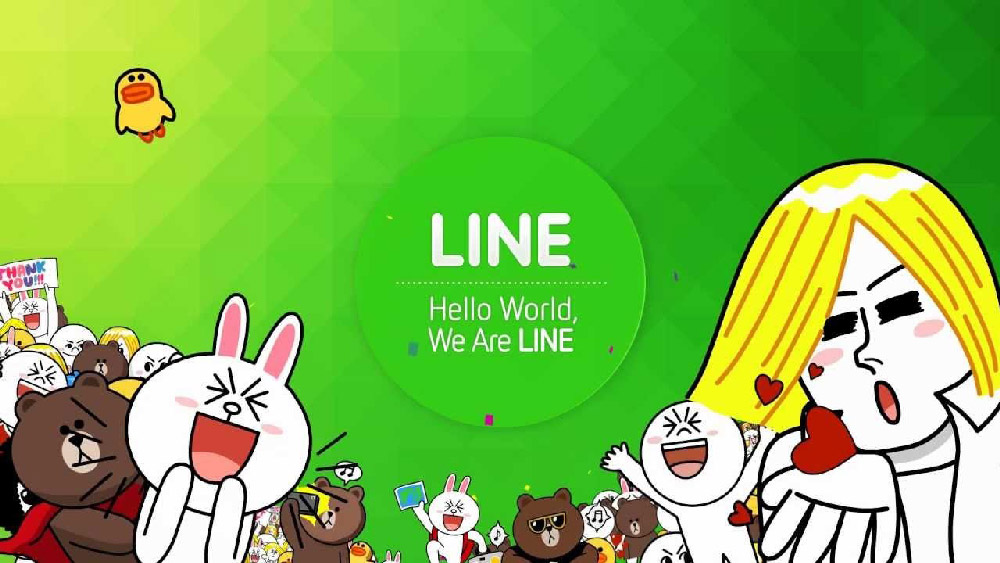
Overview of LINE in Japan
LINE is Japan's most popular messaging app, with over 90 million monthly active users, making it a powerful platform for paid advertising. Unlike global platforms like WhatsApp, LINE offers a suite of services, including messaging, social media, e-commerce, and payments. This multifunctionality makes it an essential tool for advertisers aiming to reach a broad and engaged audience in Japan.
Ad Types and Formats
- Timeline Ads: These ads appear in users' feeds, similar to social media ads on platforms like Facebook and Instagram. They can include images, videos, or carousels and are ideal for promoting products or services to a wide audience. The key to success here is creating visually appealing and culturally relevant content that resonates with Japanese users.
- Sponsored Stickers: Stickers are a core feature of LINE, and sponsored stickers allow brands to create custom stickers that users can download for free in exchange for adding the brand's LINE account. This format is particularly effective in Japan, where stickers are a popular form of communication. Brands like Coca-Cola and Disney have successfully used sponsored stickers to increase brand awareness and engagement.
- LINE Ads Platform (LAP): This is LINE's self-serve advertising platform, which allows businesses to create and manage ads across various LINE services. Advertisers can target users based on demographics, interests, and behavior, making it a highly effective tool for reaching specific audiences.
- LINE Official Accounts: Brands can create official accounts on LINE to interact directly with users through messaging, promotions, and more. This is an excellent way to build a loyal customer base, as users can receive updates and exclusive offers directly from the brand.
- LINE Points: LINE Points is a rewards program where users earn points for interacting with ads, such as watching videos or completing surveys. These points can be redeemed for purchases within the LINE ecosystem, making it a powerful incentive for user engagement.
Key Considerations for Advertising on LINE
- User Engagement: LINE users are highly engaged, with the average user spending nearly an hour on the app daily. This provides ample opportunities for brands to reach and interact with their target audience.
- Cultural Relevance: Like other platforms in Japan, cultural relevance is critical for success on LINE. Brands must ensure that their ads and content align with Japanese values and preferences.
- Brand Loyalty: LINE's features, such as official accounts and sponsored stickers, are effective tools for building brand loyalty. By providing value to users, such as exclusive offers or engaging content, brands can establish long-term relationships with their audience.
- Integration with Other Platforms: LINE's integration with other services, such as e-commerce and payments, allows for a seamless customer journey. Advertisers can take advantage of this by creating campaigns that guide users from awareness to conversion within the LINE ecosystem.
Success Stories on LINE
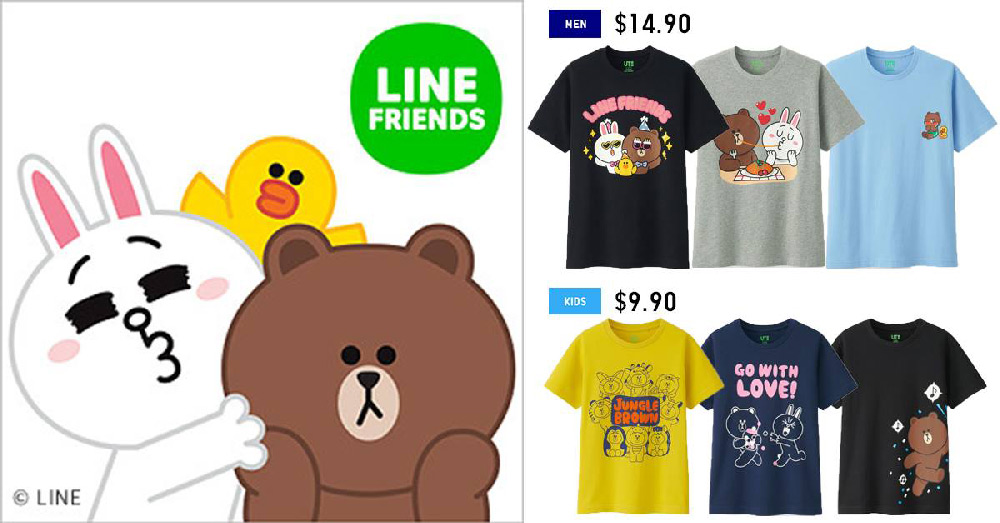
- UNIQLO: The Japanese clothing giant used LINE's official account to share exclusive promotions and content with users, resulting in a significant increase in brand loyalty and sales.
- Pepsi Japan: Pepsi ran a successful campaign using sponsored stickers and timeline ads, driving both brand awareness and user engagement. The campaign resulted in millions of sticker downloads and a boost in sales during the promotion period.
- SoftBank: SoftBank, one of Japan's leading telecommunications companies, utilized LINE's ad platform to target specific demographics with personalized offers. This approach led to a substantial increase in customer acquisition and retention.
Why LINE is Essential for Advertising in Japan
LINE's dominance in the Japanese market, coupled with its multifunctionality, makes it an indispensable tool for advertisers. Its unique ad formats, high user engagement, and seamless integration with other services offer unparalleled opportunities for brands to connect with Japanese consumers. For businesses looking to establish or expand their presence in Japan, incorporating LINE into their advertising strategy is crucial for success.
Overview of Instagram in Japan
Instagram has become one of the most popular social media platforms in Japan, particularly among younger demographics. With over 33 million active users, it’s an essential platform for brands targeting millennials and Gen Z. Instagram's visual nature and focus on aesthetics resonate well with Japanese users, who value quality and creativity in content.
Ad Types and Formats
- Photo Ads: These are simple, single-image ads that appear in users’ feeds. In Japan, where visual quality is highly valued, using high-resolution images with thoughtful design can significantly impact engagement. Brands should focus on clean, minimalist aesthetics that align with Japanese design sensibilities.
- Video Ads: Video content is highly effective on Instagram, especially short-form videos. Japanese users respond well to concise, visually engaging videos that quickly convey the brand's message. Creating culturally relevant content, such as highlighting seasonal events or popular trends, can boost engagement.
- Carousel Ads: Carousel ads allow brands to showcase multiple images or videos in a single ad. This format is particularly effective for e-commerce, as it enables brands to highlight different products or features. In Japan, carousel ads are often used to tell a story, taking users on a journey through a series of images or videos.
- Story Ads: Instagram Stories are incredibly popular in Japan, and Story Ads provide an opportunity to reach users in a more casual, immersive format. These ads should be visually striking and optimized for vertical viewing. Japanese users appreciate ads that are interactive and provide immediate value, such as special offers or promotions.
- Instagram Shopping: Instagram’s shopping features allow users to purchase products directly through the app. For businesses in Japan, integrating shopping features into Instagram ads can streamline the customer journey and boost sales, especially during peak shopping seasons like New Year’s or Golden Week.
Audience Targeting and Localization
Instagram’s targeting options allow you to reach specific demographics, including age, gender, location, and interests. In Japan, targeting by interest is particularly effective, as users tend to follow accounts that align with their hobbies or passions. For example, targeting users interested in fashion, beauty, or travel can yield high engagement rates.
Localization is critical for Instagram ads in Japan. This means not only translating your content into Japanese but also adapting it to local trends and cultural nuances. For example, using popular Japanese hashtags, collaborating with local influencers, and aligning with Japanese seasonal events can enhance your ad's relevance and impact.
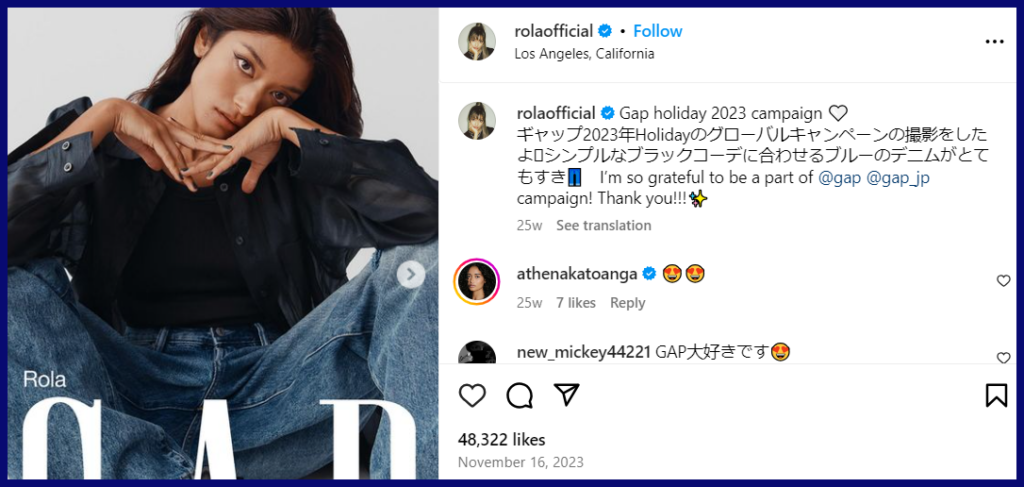
Influencer Marketing on Instagram
Influencer marketing is a powerful tool on Instagram in Japan. Collaborating with Japanese influencers who have a strong following in your target demographic can amplify your brand’s reach and credibility. Influencers in Japan are often trusted for their authenticity and style, making them valuable partners for promoting products or services.
When working with influencers, it's essential to choose those who align with your brand values and have a genuine connection with their audience. Micro-influencers, who have smaller but highly engaged followings, can also be effective in reaching niche markets.
Mobile Optimization
Since Instagram is primarily a mobile platform, optimizing your ads for mobile devices is crucial. Ensure that your ads load quickly, are easy to navigate, and provide a seamless user experience. Given Japan’s high mobile usage, mobile-optimized ads can significantly improve engagement and conversion rates.
Case Studies: Successful Instagram Campaigns in Japan
- Shiseido: The Japanese cosmetics giant utilized Instagram to promote its new product line by collaborating with local influencers and creating visually stunning Story Ads. The campaign generated a significant increase in brand awareness and product sales.
- Uniqlo: Uniqlo used Instagram Carousel Ads to showcase its seasonal collections, focusing on high-quality visuals that highlighted the brand’s minimalist aesthetic. The campaign resulted in a 20% increase in online sales.
- Muji: Muji ran a successful Instagram campaign featuring user-generated content. By encouraging customers to share their Muji experiences with a branded hashtag, the company increased its social media engagement and strengthened its brand community.
Importance of Instagram for Advertising in Japan
Instagram's visual and interactive nature, combined with its popularity among younger demographics, makes it an indispensable platform for advertising in Japan. Brands that leverage Instagram’s unique features, such as Stories, Shopping, and influencer collaborations, can effectively connect with Japanese consumers and drive business results.
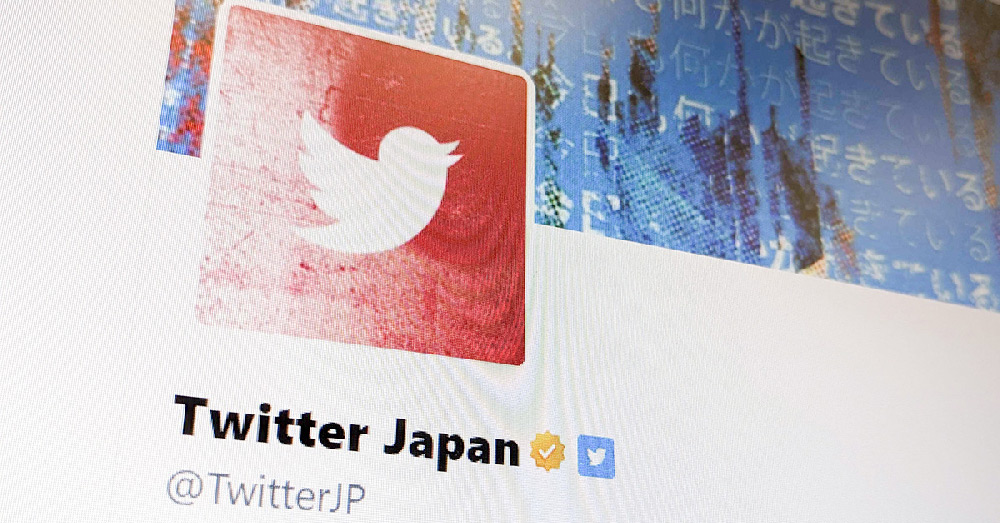
Overview of X (Twitter) in Japan
X, formerly known as Twitter, is one of the most popular social media platforms in Japan, with over 45 million monthly active users. It’s especially favored by younger demographics, including teens and young adults. The platform is widely used for real-time conversations, news updates, and entertainment, making it an essential tool for brands looking to engage with Japanese consumers on current trends and events.
Ad Types and Formats
- Promoted Tweets: These are standard tweets that are promoted to reach a wider audience. In Japan, promoted tweets should be concise, visually appealing, and culturally relevant. Japanese users tend to engage more with content that is directly related to trending topics or seasonal events.
- Promoted Accounts: This format helps increase your follower count by promoting your account to users who might be interested in your content. For brands entering the Japanese market, this is an effective way to build a local following quickly.
- Promoted Trends: Promoted Trends appear at the top of the trending list, allowing your brand to participate in the most visible conversations on the platform. This format is especially effective during major events or product launches. Brands in Japan often use Promoted Trends to tap into cultural moments, such as festivals or national holidays.
- Video Ads: Video content is increasingly popular on X in Japan. Short, engaging videos that convey your message quickly tend to perform best. For example, product teasers, behind-the-scenes content, or quick how-tos are all effective video formats for the platform.
- Twitter Amplify: This ad format allows brands to align their video content with premium video content from trusted publishers. In Japan, this is particularly effective during major sporting events or TV show premieres, where brands can tap into the excitement and engagement of a live audience.
- Twitter Live: Live streaming on X is becoming more popular in Japan. Brands can host live events, Q&A sessions, or product launches, allowing for real-time interaction with their audience. This format is excellent for building a sense of immediacy and engagement.
Audience Targeting and Localization
X offers a range of targeting options, including demographics, interests, and behaviors. In Japan, targeting users based on their interests and behaviors is particularly effective, as many Japanese users follow specific accounts that align with their hobbies or passions.
Localization is crucial for success on X in Japan. This means not only translating your content into Japanese but also tailoring it to local trends and cultural nuances. For example, participating in popular Japanese hashtags, joining trending conversations, and aligning your content with local events can significantly increase your engagement.
Key Considerations for Advertising on X in Japan
- Real-Time Engagement: Japanese users are highly engaged with real-time content on X. Brands that can quickly join trending conversations or respond to current events tend to perform well on the platform.
- Use of Hashtags: Hashtags are a powerful tool on X in Japan. Popular hashtags related to events, trends, or cultural moments can boost your ad's visibility and engagement.
- Cultural Sensitivity: Japanese consumers value respect and politeness, so ensure your ads are culturally sensitive and appropriate. Avoid controversial or overly aggressive content, as it may backfire in this market.
- Humor and Creativity: Japanese users appreciate clever and creative content. Brands that can inject humor, wordplay, or unique visuals into their ads tend to stand out on the platform.
Case Studies: Successful X Campaigns in Japan
- Coca-Cola Japan: Coca-Cola ran a successful Promoted Trend campaign during the summer, aligning with the popular summer festival season. By creating a hashtag that encouraged users to share their festival experiences with Coca-Cola products, the campaign saw a significant increase in brand engagement and user-generated content.
- Nintendo: Nintendo used Promoted Tweets and Video Ads to promote its latest game release. By leveraging trending gaming hashtags and partnering with popular Japanese gaming influencers, the campaign generated massive buzz and led to a spike in pre-orders.
- Toyota: Toyota utilized Twitter Amplify during a major sports event, aligning its video ads with premium sports content. This strategy increased brand visibility among sports fans and led to higher engagement during the campaign period.
Importance of X for Advertising in Japan
X's real-time nature and popularity among younger demographics make it a vital platform for advertising in Japan. Brands that can effectively use X to engage with current trends, local events, and cultural moments will find it a powerful tool for building brand awareness and driving business results in the Japanese market.
Key Considerations for Success in Japan
- Localize Your Campaigns: Japan is a market where localization is key. This means not just translating your ads into Japanese but ensuring the tone, cultural references, and messaging resonate with Japanese consumers. Hiring native Japanese speakers or localization experts is crucial for this.
- Understand Cultural Nuances: Japanese culture is complex and requires a deep understanding of its subtleties. For example, politeness and quality are highly valued. Your ad copy should reflect this by being respectful and highlighting the quality of your product or service.
- Use Native Ad Formats: Native ads, which blend seamlessly with the content on a platform, are effective in Japan. These ads appear less intrusive and more trustworthy, which can lead to higher engagement and conversion rates.
- Emphasize Mobile Advertising: With the high smartphone penetration in Japan, optimizing your ads for mobile is essential. This includes ensuring your landing pages are mobile-friendly and load quickly.
- Leverage Japan-Specific Platforms: Besides Google and Yahoo! JAPAN, consider utilizing Japan-specific platforms like LINE for a more targeted approach.
- Data Privacy Compliance: Japan has strict data privacy laws, so ensure your advertising practices comply with local regulations, such as the Act on the Protection of Personal Information (APPI).
- Campaign Monitoring and Optimization: Regularly monitoring your campaign performance and making necessary adjustments is key to success. Japanese consumers' behaviors can be quite different from those in other markets, so being flexible and responsive to trends is vital.
- Set Realistic Budgets: Paid advertising in Japan can be costly, especially in competitive industries. It's important to set realistic budgets and expectations. A good starting point is allocating a minimum of 100,000 JPY per month over several months to gather sufficient data for optimization.
Conclusion: Partnering with Krows Digital for Your Japanese Paid Advertising Needs
Entering the Japanese market can be challenging, but with the right strategy and expertise, success is within reach. At Krows Digital, we specialize in helping foreign companies navigate the complexities of the Japanese digital landscape. Whether you need help with Google Ads, Yahoo! JAPAN Ads, or social media advertising, our team of experts is here to assist you. Contact us today for a free consultation and let us help you achieve your marketing goals in Japan.



